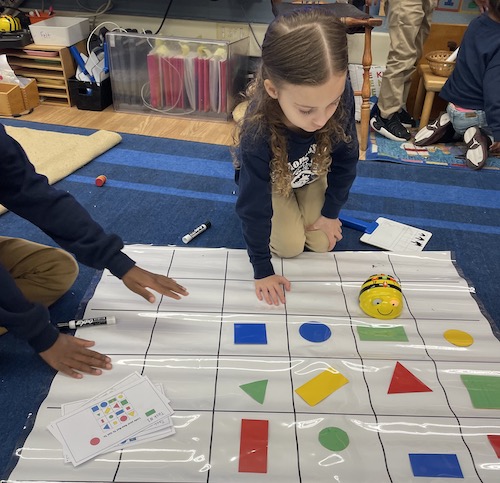Key points:
- Keep students at the center of any new computer science initiative
- How to integrate a computer science curriculum into K-5 classrooms
- 4 resources to differentiate computer science instruction
- For more news on computer science, visit eSN’s STEM & STEAM page
With 24,000 students, Springfield Public Schools is usually among the three largest school districts in Massachusetts. Our students are spread across 31 elementary schools and a total of 70 schools. It’s no exaggeration to say that computational thinking plays a part in all of them. Fortunately, the district earned a grant that allowed us to offer computer science at every grade level, starting as early as pre-K. Because many of our teachers had no background in computer science, though, this large-scale implementation was no easy task.
Meeting standards and managing devices
One of our first challenges was that Massachusetts has specific digital literacy and computer science standards that are a bit different than the national CSTA standards used by many other states. Our department combines digital literacy and computer science, so we have four different strands that encompass digital citizenship and computational thinking concepts.
Springfield Public Schools is fortunate enough to be a 1:1 district that provides Microsoft student laptops for everyone, giving all students access to Office 365. Managing devices for thousands of students requires a substantial time commitment. As a result, computer science teachers need to spend two-thirds of their time teaching and one-third managing the different devices students use.
Hiring new computer science teachers
With so many students to consider, the district decided to hire or reassign one teacher into a computer science teacher role at each school. Educators didn’t need to earn an additional license to teach computer science at the time (a Digital Literacy and Computer Science license for Massachusetts came out in the fall of 2023), so candidates were only required to be licensed teachers. Our candidate pool was a mixture of completely new hires and teachers transitioning from other subjects, many of whom had no computer science background. This meant that the district needed a curriculum that would be robust enough to support all of these teachers, no matter their level of computer science knowledge or experience.
Building the right computer science curriculum
The decision to hire computer science teachers for every building was part of a larger “CSforAll Springfield” initiative. Partnering with Sage Fox Consulting and UMass Amherst, we brought together a team of teachers to curate a curriculum that embedded computational thinking standards into lessons that were already being taught. For example, a kindergarten lesson on algorithms is integrated into “how to” procedures for a fire drill.
We had a scope and sequence that met our standards, as well as suggestions for different activities and lesson plans, but we needed something that worked for each grade level individually without taking a one-size-fits-all approach.
We chose the curriculum from Ellipsis Education for a few key reasons. The curriculum clearly lays out each lesson in a way that allows teachers to follow it like a script. Ellipsis teaches specific tech skills, such as using the Scratch programming platform, that align well with the skills that are at the core of our computer science standards. The program also provides ongoing professional development support for teachers.
As with any new initiative, professional development (PD) has been key. Recently, for example, we went beyond the usual Zoom PD to offer an all-day, in-person session that gave teachers without a background in computer science more detailed information about computer science pedagogy, as well as a chance to collaborate with their more experienced peers.
Sharing ideas
To provide teachers with the most updated information they need to take advantage of all the available resources—and to show district stakeholders how our computer science initiative is going—we use a number of different communication tools.
With 30 elementary buildings and six secondary buildings that I oversee, linking teachers across the district can be a struggle. Teachers and other staff members use various platforms to share resources, including Microsoft Teams, Schoology, and a dedicated channel for tech duties. Teachers use these channels to bounce ideas off each other, share celebrations, and receive announcements. Overall, our teachers have been delighted with the results and are proud to showcase the great work they and their students are doing.
Advice for other districts
It has been a challenge getting everything in place, but I wouldn’t do anything differently. By taking the time to listen to teachers and learn what they need, we’ve been able to set the right resources in place that align with our curriculum and put us on a path to reach our high-level goals.
If I could narrow down the best advice I can offer to other districts, it would be to start slow, leverage your resources, find partners, and gain administrative buy-in any way you can. We want the next generation to have a comprehensive understanding of everything that’s involved in computer sciences. To achieve this, it’s crucial to take the initiative and keep students at the center of any new computer science initiative.
- 4 ways to encourage play in education - April 25, 2024
- CoSN IT Leader Spotlight: Lisa Higgins - April 25, 2024
- It’s time to pay student teachers - April 25, 2024

